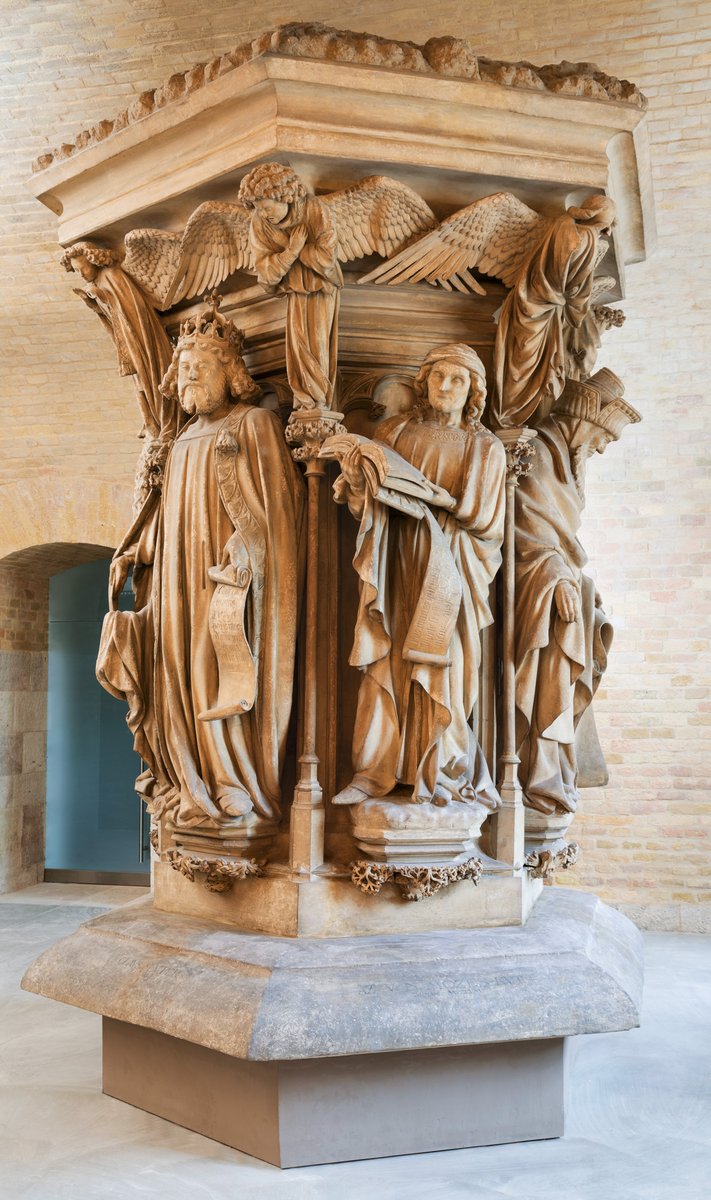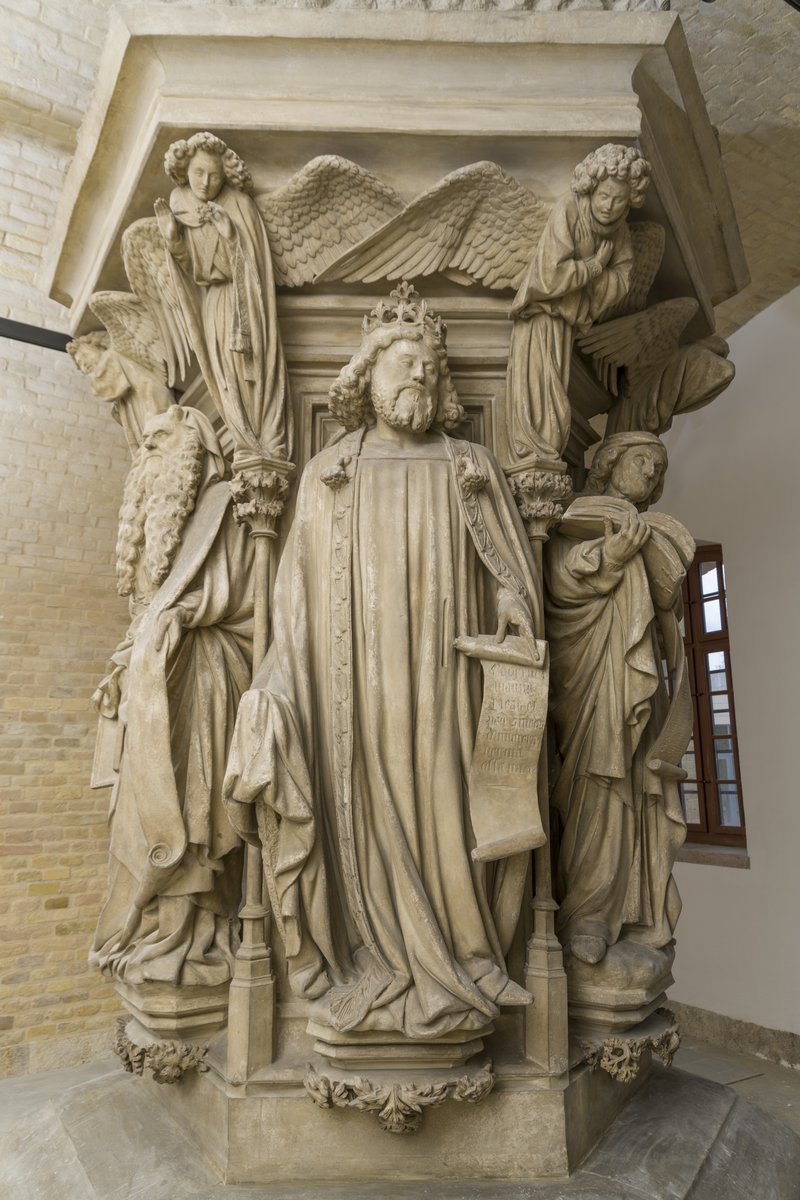Well of Moses
Claus Sluter, E. Pouzadoux (cast maker)- Artist
-
Claus Sluter
Haarlem ca. 1360 – 1406 Dijon
E. Pouzadoux
(cast maker)
Palais du Trocadero, Párizs
- Dated
- 1395—1404/1405 (original), 1908 (cast)
- Classification
- sculpture, well-head, plaster cast
- Medium
- plaster cast
- Dimensions
- 375 × 232 × 260 cm
- Inv.no.
- Rg.127
- Department
- Sculptures - Plaster casts
- Current Location of the Original Artwork
- France, Dijon, Centre Hospitalier La Chartreuse
Claus Sluter, an influential master of early Netherlandish sculpture, entered in 1385 the service of Philip the Bold, Duke of Burgundy. A particularly renowned work by Sluter, the Well of Moses, was made for the Carthusian monastery in Champmol, which had been founded by the duke and is today a hospital. The hexagonal well was placed in the monastery courtyard, which now functions as the hospital garden. The well is bordered by statues of the prophets, including the eponymous Moses. The prophets are holding scrolls foretelling the death of Jesus. Weeping angels under the ledge were linked with a Calvary group (depicting Christ on the Cross) at the crown of the well. However, this element was sadly destroyed in the eighteenth century (fragments can be viewed at the Musée Archéologique in Dijon). Sluter’s sculptural realism goes well beyond the graceful style of the International Gothic, thereby anticipating the approach of the fifteenth-century Renaissance artists.





